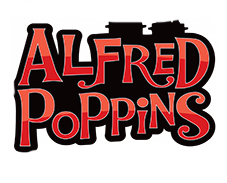Consumer guidance for buying logs and firewood
BUYING FIREWOOD – QUALITY OF WOODYou should only ever burn dry wood!
The only way of knowing if your firewood is ready to burn is by knowing the moisture content. If you buy your own moisture meter you will be sure that your logs are dry enough and ready to burn. Owning a moisture meter will also reduce any ‘misunderstandings’ on the suitability of the logs you buy in: Pick a random log, split it and use the moisture meter to measure the moisture content of the wood across the grain. All wood is the same? You could thus argue that there is no such thing as bad wood – it is just that you will need far more logs from from some species compared to others to achieve the same heat output. You should at least consider burning logs from some of the ‘lesser’ softwood types (especially at times when seasoned hardwoods are scarce) but only if the difference in calorific value is reflected in the price. It is also important to remember that “Kiln dried logs” are no different than naturally seasoned logs of an equivilant moisture content. BUYING FIREWOOD – QUANTITIESOne of the biggest issues firewood buyers face is understanding what the quantities of wood that are actually being offered for sale by firewood suppliers. There are so many variables in the firewood supplied that makes it particularly difficult to achieve a description or measurement that is both practical and meaningful for both the supplier and customer. Stacked firewood logs (split or unsplit) are meant to be measured by volume, usually cubic meters. However, most wood in the UK is bought by “the load”, builders bag or net. Wood is rarely sold by weight as the weight will vary dramatically depending on the species of the logs in the pile and how dry they are. Insisting on buying by weight may also encourage the supply of poorly seasoned wood which, due to the excess water content, weighs heavier. Costs may also increase if a trip to the nearest weighbridge is incurred. It is thus important for the buyer to determine just what quantities they are buying: “A Load of Wood” Builders bag / Ton bag / Dumpy bag of logs Again, it is likely that the logs inside the bag have been loosely loaded so expect the volume of your purchase to reduce if you make a nice stack of your firewood. Be aware that only dry, seasoned wood should be stored in a buiders bag; as there is little opportunity for air circulation any damp or wet wood will quickly develop mold if left in the bag. Most UK suppliers prefer to sell by the cubic meter or part thereof but here are some other definitions of firewood volume measurements that you may come across:
BUYING FIREWOOD – PRICEThe price for delivered logs very much depends on the quality of the firewood you specify, the quantity you buy at any one time, your location, and the time of year. Ring around the local suppliers and find out exaclty what is on offer for the price. Remember that it is likely that prices may vary throughout the year and note that in recent times, many firewood suppliers have run out of seasoned firewood stock fairly early in the season. |


